-
Posts
574 -
Joined
-
Last visited
-
Days Won
2
Content Type
Profiles
Forums
Blogs
Gallery
Events
Store
Posts posted by Trooper_D
-
-
Next to the stamp is written "for mister Jovan Veljković, retired colonel". Bellow "for mister Stojan" (underlined) and under that "Jacket, Suit". Interesting document, thanks for sharing it.
Thanks for this, Paja.I was hoping it might be for some items of uniform however, as it is associated with a retired officer, I suppose I can still consider it 'militaria'
 0
0 -
These three chaps seem to have done well for themselves! I am particularly interested in the man on the right, wearing what I believe is the Rote Kreuz Ehrenkreuz. Can anyone tell me what this was awarded for, please? Any other information would also be welcome.

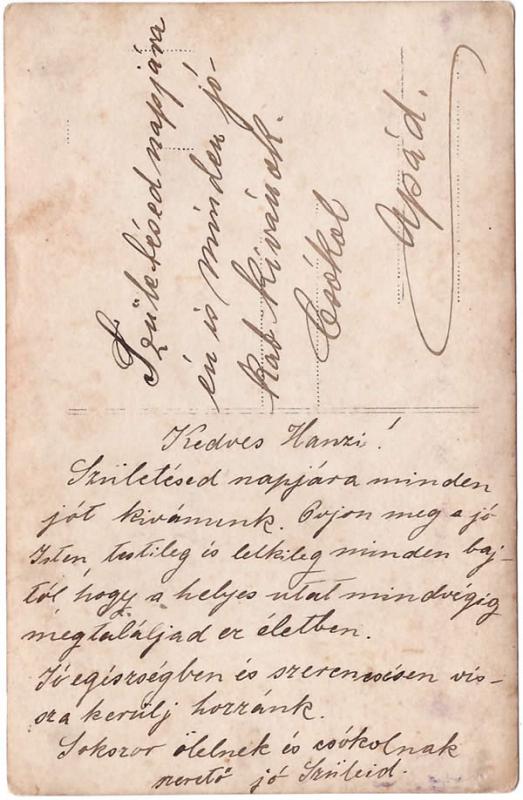
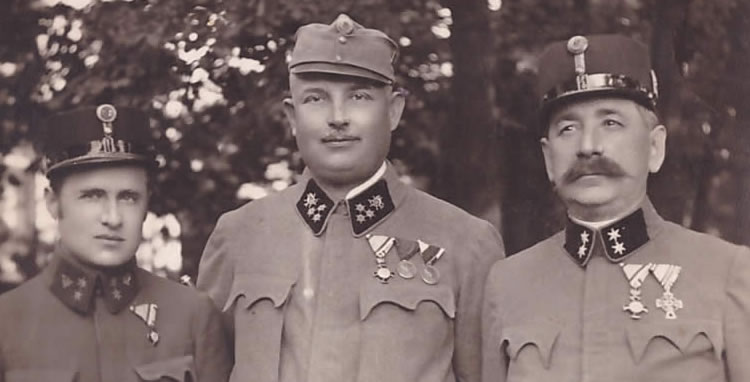 0
0 -
"Official Dress in Serbia" contains an example of a XIX century uniform made by Moritz Tiller & Co. Wien.
... and also of Belgrade (see attached). I had forgotten I had this in my collection until I reread this thread. btw can you tell me what the invoice is for, please?
 0
0 -
You've been very busy, Paja! I shall give this thread a close reading when I have a bit more time. One quick question: were these uniforms made in Serbia/Yugoslavia and, if so, do you know the tailor or tailors who had the skills to produce them? As far as the UK is concerned, today only one or two tailors still make diplomatic uniforms - perhaps the best is Henry Poole & Co who also make court dress,
https://henrypoole.com/livery/0 -
Here is a link to an article about Serbian and Yugoslav diplomatic uniforms on the website of the Serbian Ministry of Foreign Affairs. It lists all the uniform ranks at the end with specifications.
http://www.mfa.gov.rs/en/diplomatic-tradition/diplomatic-consular-suits
Best
Ivan
Brilliant, Ivan, just what I was hoping for! Thanks.
0 -
... if you wish I can post more photos of our diplomats from pre-WW2 era.
I would love to see them, Paja. If not here, perhaps in a new thread?
0 -
Diplomatic uniform according to regulation from I believe 1931, II class: Counselor and Consul General.
Thank you for posting this photo of a diplomatic uniform, Paja. I am fascinated by them and am always interested to see examples from different parts of the world. Do you know of an online source which would set out, in visual form, the specifications followed by Serbian diplomats at this time - or, at least, shows more images of them?
0 -
It looks like the czapka below is either from the same 'stable' or is blueman's helmet before restoration. 1600 x 1200 images are available here (click on 'Enlarge'),
http://www.rarusnet.com/product_info.php?products_id=12417
Note that the inside of the helmet, and the wire framework from which it is constructed, is visible in one of the images.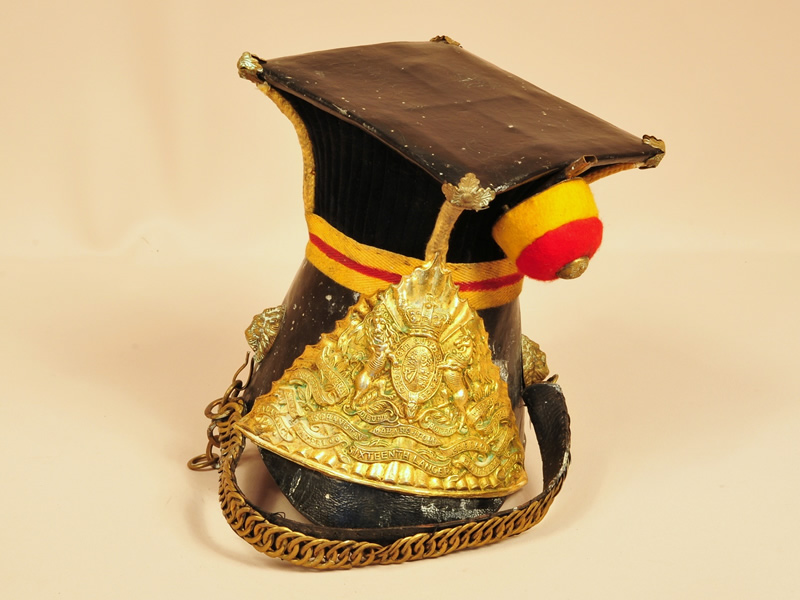

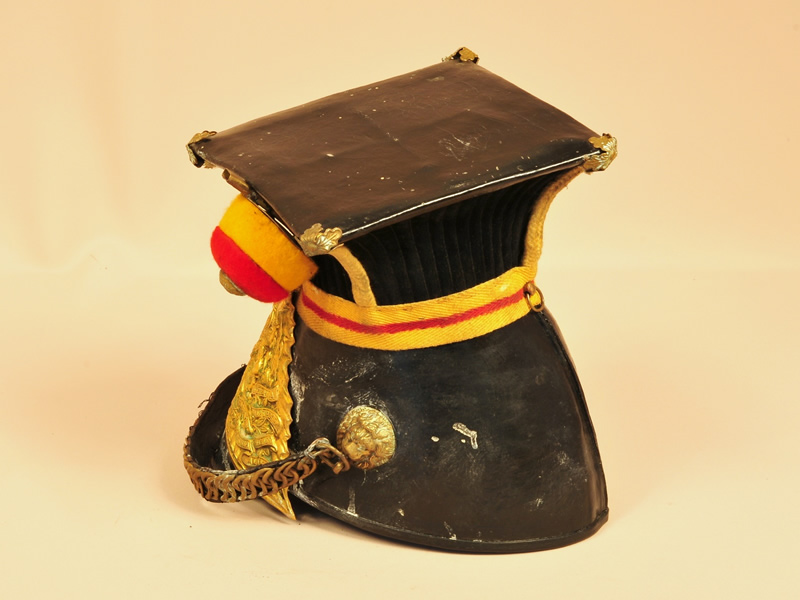
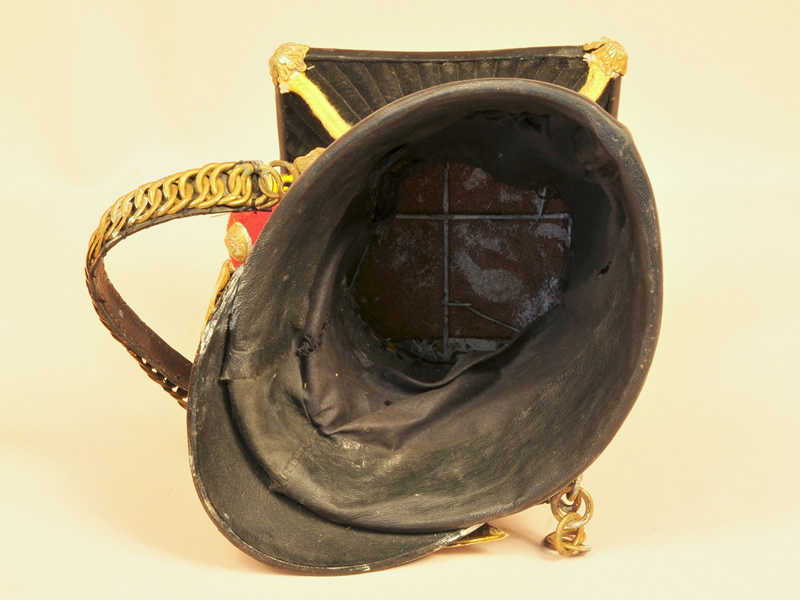 0
0 -
I have noted already that officers of British extraction were given the social rank of Esquire in the Militär-Schematismus that I have looked at, to date. It occured to me that one way of establishing the number of these British officers present in the Austrian army at any given time would be to search through a Militär-Schematismus for a chosen year for all instances of 'esq'.
I have now done this, using the text-based version on archive.org, for the year 1847. The results - 24 officers, in total - are shown in the attached table. Two points need to be made. First, I have listed the names as they appear in the Militär-Schematismus and, in a number of cases, the German version of an English name was used by the Austrians. Secondly, I spotted two officers (marked by an asterisk) who I am assuming are British (in one case, I know it for a fact) but who were not accorded the rank of Esquire. I am sure that there would have been others, had I looked more closely.
I don't know the size of the Austrian officer corps at the time but I imagine 24 would have been a tiny percentage of the total. However, I was surprised that the number was as high as this. I also note that the incidence of Scottish or Irish surnames is much higher than English (or Welsh) ones but I suppose this should be no surprise bearing in mind the tradition of service abroad of families from those two countries. I wonder, however, why representatives of the cavalry outnumber the infantry four to one?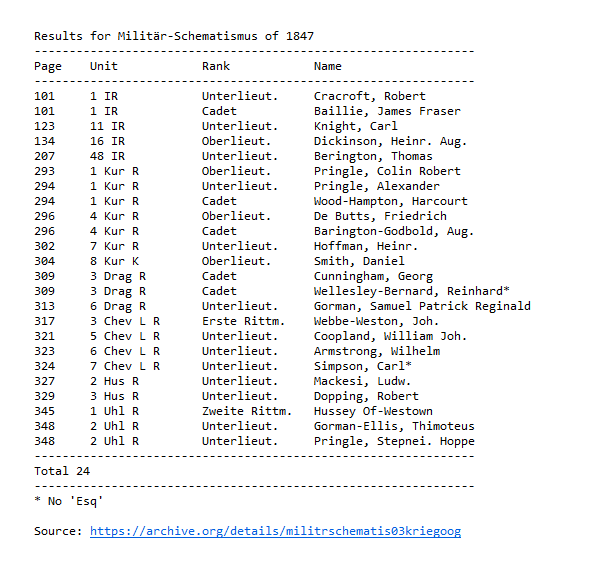 0
0 -
James Henry NORCOTT (c.1813-1870), youngest son of Major General Sir Amos Norcott (of 95th Rifles fame)[1], he was baptised in Reading in 1813 [2]. Norcott matriculated into Trinity College, Cambridge in 1834 but did not graduate [3]. He was a cadet in the 7 Husaren-regiment in 1839 (under the name 'Heinrich Norcott Esquire')[4] and an Unterlieutenant by 1841 (the 1888 marriage notice of his son, in the Melbourne Argus [5], suggests that he also served in the 8 HR) but had resigned by 1847. By 1850, he was in Australia, where he got married on 19 March [7].
The fact that Norcott did not manage to graduate suggests to me that service in the Austrian army wasn't the original career envisaged for him.
Sources
1. http://www.familiesunearthed.com/reilly/norcott/james-henry.htm
2. https://familysearch.org/pal:/MM9.1.1/NR5X-BZQ
3. http://brittlebooks.library.illinois.edu/brittlebooks_open/Books2009-06/trinco0001admtri/trinco0001admtriv00004/trinco0001admtriv00004_ocr.txt
4. https://archive.org/stream/militrschematis07kriegoog#page/n346/mode/2up
5. http://trove.nla.gov.au/ndp/del/article/6911794
6. There is no entry for him in the 1847 Schematismus
7. http://trove.nla.gov.au/ndp/del/article/47719310 -
It seems like "Achilles" was tied to the 10th as a cadet, but confirmed as a subaltern in the 7th. Edmond Nolan entered the 10th Hussars even though Nolan Sr originally bought him a place in the 5th Hussars. Louis Nolan served at the time of the coronation of Queen Victoria. As both Archibald and Louis were confirmed in May 1835 and the former resigned within a year, he has to have been out in the spring of 1836 while Louis certainly served two years after. Louis was commissioned in the 15th Light Dragoons in the spring of 1839.
/Jonas
Thank you again, Jonas. Was this all from Buttery? If so, his seems like a good book to get hold of. You raise the interesting issue of buying a place in a regiment. I wonder if this was the same kind of system as appertained in the British army before the reforms. To answer my own question, I need to have another read of Istvan Deak's Beyond Nationalism, which seems the definitive work on all matters relating to the Austro-Hungarian officer corps.
0 -
Robert O'Hara Burke. Born in Ireland in 1820 or 1821, having failed his exams at the Royal Military Academy, Woolwich, he entered the 7 Husaren-Regiment in 1841. Burke left Austro-Hungarian service due to ill-health in 1848 and, on returning to Ireland, joined the Irish Constabulary. He resigned in 1853 and emigrated to Australia.He died, in 1861, during the course of the Burke and Wills expedition (of which he was joint leader), the first crossing of Australia from south to north.
His Wikipedia entry, on which the above summary is based, is here,
http://en.wikipedia.org/wiki/Robert_O%27Hara_Burke
Here is Burke's entry in the Militär-Schematismus for 1841
https://archive.org/stream/militrschematis05kriegoog#page/n343/mode/1up(I came across his name in the 1841 Militär-Schematismus by chance when researching one of other entries in this thread!)
0 -
It seems like Louis Nolan quit Austro-Hungarian service more in "bad standing" than as a deserter but I agree, his actions could have been smoother, and yes, "Achilles" was his older brother Archibald. Archibald Nolan resigned from his commission in the 7th Hussars within a year. Source; "Messenger of Death" by David Buttery.
Thanks for this additional information, Jonas (7th or 10th Hussars btw?). It prompted me to look at the Militär-Schematismus for 1839 to see if I could find Achilles. I couldn't but did find an entry, again in the 10 HR - as a cadet, for their youngest brother, Edmund! Interestingly, that very British term 'Esq' is used as an indicator of rank.
https://archive.org/stream/militrschematis07kriegoog#page/n350/mode/1up
He appears not to last long as he doesn't appear in the Militär-Schematismus for 1840
 (although his brother Ludwid is, surprisingly). I wonder if all three brothers 'jumped ship' at about the same time?0
(although his brother Ludwid is, surprisingly). I wonder if all three brothers 'jumped ship' at about the same time?0 -
Richard Debaufre Guyon, started his career in 2 Huraren-Regiment in the early 1830s. After retiring in the late 1830s, he took up arms in the Hungarian cause in the 1848 revolt. On its failure, he went into exile and further military service in Turkey.
Although he was born in England, he appears to have been of French and supposedly noble heritage. I reproduce below the first paragraph from his entry in the Oxford National Dictionary of Biography (ONDB),Guyon, Richard Debaufre (1813–1856), army officer, was third son of John Guyon, of the Royal Navy, who, after much service, retired with the rank of commander on 28 July 1829, and died at Richmond, Surrey, on 15 January 1844, and his wife, Elizabeth. Richard Guyon was born at Walcot, Bath, on 31 March 1813, and being intended for the army at an early age held a commission in the Surrey militia. He afterwards studied in the military academy in Vienna, and aged eighteen received an appointment in Prince Joseph's 2nd regiment of Hungarian hussars, where he attained the rank of captain. In November 1838 he married a daughter of Field Marshal Baron Spleny, commander of the Hungarian life guards. Soon after his marriage he left the Austrian service, and retired to an estate belonging to his wife near Pest, where he occupied himself in cultivating farms.
His Wikipedia entry is here,
http://en.wikipedia.org/wiki/Richard_Guyon
The ONDB entry suggests that he entered the Hussars at the age of 18, i.e. 1831 or early 1832. However, he seems first to appear in the Militär-Schematismus for the year 1835 as an Unterlieutenant under the name Gayon!
https://archive.org/stream/militrschematis11kriegoog#page/n337/mode/1up
He would have been a contemporary of Ludwig Nollan in the Hussars albeit in a different regiment. Thanks to Markgraf for introducing Guyon to us in another thread.0 -
Thomas Crewe-Preston (aka Creve Preston), an Oberlieutenant in Kurassier Regiment Nr.4 in the 1840s.
Crewe-Preston is said to be an Englishman, allegedly born in London on 10 February 1816, but is of uncertain origins. Iver brought this officer to our attention in his interesting thread on Crewe-Preston's grave, which is located in Slovakia. The thread, which includes further discussion about Crewe-Preston can be found here,http://gmic.co.uk/index.php/topic/61969-thomas-crewe-preston-creve-preston/?p=583975
0 -
Re the memorial is there any way that some fund can be set up towards the restoration of the grave.
I wonder if the British Embassy in Slovakia know about this grave? Perhaps they might be able to coordinate such an admirable fund?
0 -
This is a most interesting thread and I am sure with more digging other British Officers will come to light
In order not to swamp Iver's interesting thread on Thomas Crewe-Preston's grave, I have started a new thread for anyone who would like to post information about men of British (including Irish) extraction who served in the Austro-Hungarian forces.
I have got the ball rolling with a post on Captain Nolan, which contains a bit more information than I have posted in this thread.
0 -
Ludwig Nollan - 10 Husaren-Regiment, also know as ...
... Captain (Lewis Edward) Nolan of Charge of the Light Brigade fame. I will start by posting the first two paragraphs from his entry in the Oxford National Dictionary of Biography,Nolan, Lewis Edward [Louis, Ludwig] (1818–1854), army officer and writer on cavalry, was born on 4 January 1818 in York county, Upper Canada, the second son of John Babington Nolan (1786?–1850), captain 70th foot, and his second wife, Elizabeth (1779–1870), daughter of George Harland Hartley and already twice widowed. Lewis had two stepbrothers and two brothers, all of whom held commissions in either the Austrian or British armies. His grandfather, Babington Nolan, died in 1796 on the West Indian island of St Domingo, serving with the 13th light dragoons.
Shortly after Nolan's birth, the family moved to Scotland and subsequently to Italy, where on half pay his father became British vice-consul in Milan, then Austrian-ruled. Educated at the military college in Milan, on 15 March 1832 Nolan joined the 10th Imperial and Royal Hussars, a Hungarian unit of the Austrian army. Tutored by the famous riding instructor Colonel Haas and later serving with his regiment in Austria's Hungarian and Polish provinces, Nolan's ‘great zeal and application’ and his skills as a daring horseman and expert swordsman were officially praised. Visiting England in 1838, Lieutenant Nolan attended a royal levée and saw Queen Victoria crowned. Pleading ill health the following year, Nolan returned to his family in Scotland. While nominally in the Austrian army until October, on 15 March 1839 Nolan's name appeared as a cornet through purchase in the 15th (the King's) light dragoons, and he sailed with the regiment to Madras.Wikipedia expands a bit on his early military training and career: http://en.wikipedia.org/wiki/Louis_Nolan#Early_life_and_education
In any event, it seems to me that he was, effectively, a deserter from the Austro-Hungarian army
The first mention that I can find of him in the Militär-Schematismus is that for the year 1833 (see link below and attached images).
https://archive.org/stream/militrschematis03austgoog#page/n351/mode/1up
Interestingly, a fellow cadet is 'Achilles Nollan', who, I would suggest, was Lewis/Ludwig's eldest brother Archibald. Archibald, along with some details of their father, is mentioned here
http://www.ucl.ac.uk/lbs/person/view/420034346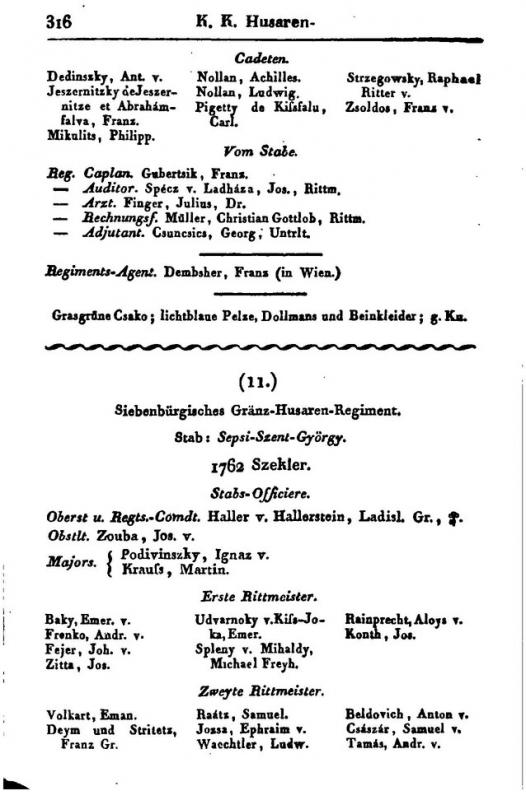 0
0 -
I am starting this thread as a place to post information about officers of British (including Irish) extraction who served in the Imperial Austro-Hungarian forces (including those who served with the Hungarian forces during the 1848 Hungarian Revolution). I hope that this is the appropriate forum.
I would welcome contributions from other GMICers.
0 -
Did you heard about Richard Guyon?

Thanks for introducing me to this interesting man, Markgraf. I had previously been unaware of him. Although he was born in England, he appears to have been of French and supposedly noble heritage. I reproduce below the first paragraph from his entry in the Oxford National Dictionary of Biography (ONDB), which is a bit more informative than his Wikipedia entry,
Guyon, Richard Debaufre (1813–1856), army officer, was third son of John Guyon, of the Royal Navy, who, after much service, retired with the rank of commander on 28 July 1829, and died at Richmond, Surrey, on 15 January 1844, and his wife, Elizabeth. Richard Guyon was born at Walcot, Bath, on 31 March 1813, and being intended for the army at an early age held a commission in the Surrey militia. He afterwards studied in the military academy in Vienna, and aged eighteen received an appointment in Prince Joseph's 2nd regiment of Hungarian hussars, where he attained the rank of captain. In November 1838 he married a daughter of Field Marshal Baron Spleny, commander of the Hungarian life guards. Soon after his marriage he left the Austrian service, and retired to an estate belonging to his wife near Pest, where he occupied himself in cultivating farms.
I am reminded of the early career of another Englishman who spend time in Austrian service, Captain Nolan of Charge of the Light Brigade fame. Again from the ONDB:
Nolan, Lewis Edward [Louis, Ludwig] (1818–1854), army officer and writer on cavalry, was born on 4 January 1818 in York county, Upper Canada, the second son of John Babington Nolan (1786?–1850), captain 70th foot, and his second wife, Elizabeth (1779–1870), daughter of George Harland Hartley and already twice widowed. Lewis had two stepbrothers and two brothers, all of whom held commissions in either the Austrian or British armies. His grandfather, Babington Nolan, died in 1796 on the West Indian island of St Domingo, serving with the 13th light dragoons.
Shortly after Nolan's birth, the family moved to Scotland and subsequently to Italy, where on half pay his father became British vice-consul in Milan, then Austrian-ruled. Educated at the military college in Milan, on 15 March 1832 Nolan joined the 10th Imperial and Royal Hussars, a Hungarian unit of the Austrian army. Tutored by the famous riding instructor Colonel Haas and later serving with his regiment in Austria's Hungarian and Polish provinces, Nolan's ‘great zeal and application’ and his skills as a daring horseman and expert swordsman were officially praised.
Interesting that both men served in Austrian Hussar regiments at the same time. I wonder if they ever met?
0 -
i will try to contact wienna, maybe they have there something...
I will be very interested to see whatever they give you. I am coming to think that the name "Crewe-Preston" may have been an affectation to improve his social status. In any event, the origins of this man are obscure so it would be nice if we could cast some light on him. As a general point, I am always interested in finding English names in the Schematismus as, as I indicated in another thread, I am interested in this idea that loyalties were more fluid at this time (in other words, it was easier to serve in a foreign army).
0 -
Iver
This is a fascinating but rather curious puzzle you've set us! I'm sure that you have googled "Crewe-Preston" already, in which case you will know that there are no instances of the family to be found (or at least, that I can find). Furthermore, familysearch.org, where I would normally expect to find reference to a London baptism, is silent and ancestry.co.uk is no better. It is possible, I suppose, that he was born in London but baptised overseas (Austria?).Did you find his date-of-birth on his gravestone or do you have another source? Can you, perhaps, give us some more clues?
0 -
Very interesting additional information, Saxcob. Many thanks.
0 -
Thank you for posting this, Saxcob - another wonderful piece from your collection which I, for one, have enjoyed seeing! This Adels-brief is quite a bit more substantial than its British equivalent, Letters patent of Nobility, which would consist of a single piece of vellum, albeit with the Royal seal. Am I correct that the figure on the coat of arms is Diana, in her guise of Moon goddess as well as goddess of hunting? Does the Adels-brief explain why she was chosen?
Another question, if I may? I see from the printed text that he was elevated to the nobility - untitled, I think - on 1.1.1858; however, the Adels-brief is dated '7xx [can't read] 1859', if I am reading it correctly. Are you able to tell me why there is a difference in date?
On a more general point, you note that your man served with the Turkish army. Was this an official transfer from the Prussian army or was it a reflection of the greater fluidity of loyalties, then, whereby adventurous young men could serve in armies other than that of their mother country?Apologies for so many questions - and please be in no rush to answer them - but you have to expect it, if you post such an interesting item
 0
0



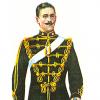
KuK Soldiers wearing medals - show your photos
in Austro-Hungarian Empire
Posted
Thank you, as always, Margraf for this information - particularly that about the Red Cross award. I hesitate to call it a 'paid-for' award but that is rather what it sounds like (it is such an attractive decoration, who would be able to resist!). I wonder if any German speakers might be able to add anything to this, using this extract from a contemporary three-part folding postcard showing the major Austro-Hungarian ODMs, from my collection?